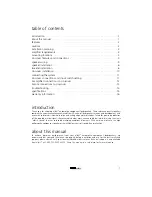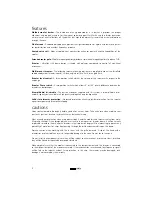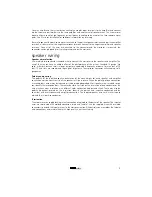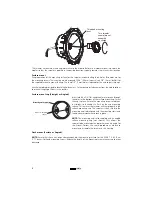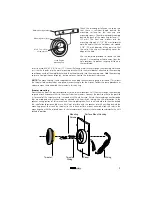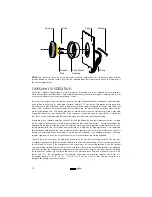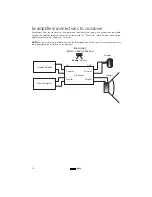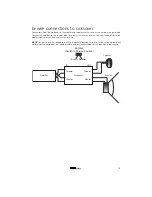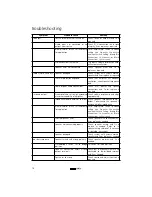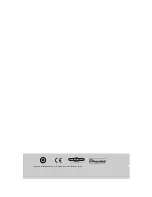
crossover features and connections
Bi-amp/Parallel switch
Select the Bi-amp position if you intend on driving the woofers and tweeters with separate amplifiers (four
channels). Select the Parallel position if you intend on driving the woofers and tweeters with the same
amplifier (two channels).
Tweeter Level switch
The three position switch in the crossover adjusts the output level of the tweeter. The mid-position (0) is
referenced as equal output from the midrange speaker and the tweeter. The high position (+3) provides
3dB more output from the tweeter. The low position (-3) provides 3dB less output from the tweeter. Select
the position of this switch for your listening preference.
Tweeter Phase switch
Selects 0 or 180 degrees phase relationship between the tweeters. Select the position of this switch for
your listening preference.
Tweeter Thermal breaker
This component protects the tweeter if too much power is delivered to the tweeter. If activated, the
tweeter will briefly stop producing sound until the breaker automatically resets.
Tweeter DC Clip protector
These components limit the amount of current delivered to the tweeter if overdriven by either excess
amplification or clipped signal from an overdriven amplifier.
Connections to the amplifier
The crossovers are supplied with removable screw type connectors. The crossovers have two sets of input
terminals, this allows the system to be driven by either two for four channels of amplification. To correctly
use these wiring schemes, you must move the Bi-amp/Parallel switches to the desired position.
To bi-amplify the system you will need 2 stereo amplifiers (or 4 amplifier channels) with one pair of
channels to drive the tweeters and one pair to drive the woofers. In this configuration, the Bi-amp/Parallel
switch must be set to Bi-amp.
Bi-amp–Parallel
Switch
Tweeter Level (dB)
Switch
Tweeter Phase
Switch
Tweeter DC Clip
Protection
Tweeter Thermal
Breaker
IN
Woofer Tweeter
+ - + -
OUT
Woofer Tweeter
+ - + -
-3, 0, +3
Bi-amp Parallel
180° 0°
4


